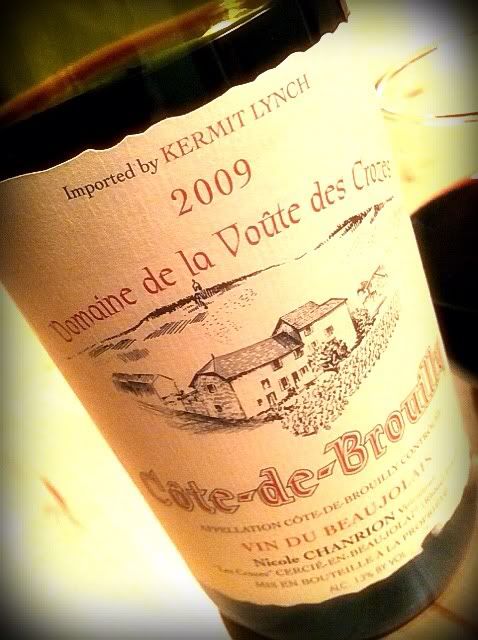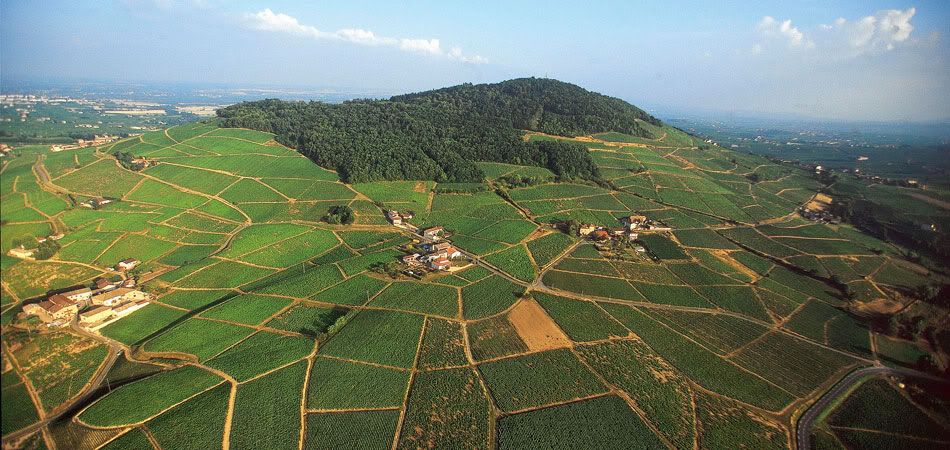Nicole Chanrion, Domaine de la Voûte des Crozes, Côte de Brouilly 2009 is made from 100% Gamay grapes, has an alcohol content of 13% and retails for $19.
Kermit Lynch imports this wine to the US, and he tells a rather compelling story about the winemaker on his website.
“When Nicole Chanrion began her career in the 1970s, convention relegated women to the enology labs and kept them out of the cellar - even her mother thought winemaking was man’s work - but she would not be deterred from her dream of becoming a vigneronne. With six generations of family tradition preceding her, she grew up helping her father in both the vineyards and the cellar in the Côte-de-Brouilly, one of the southernmost crus of the northern Beaujolais."Ever since taking over the family domaine in 1988, she works all 6.5 hectares entirely by herself, from pruning the vineyards and driving the tractors to winemaking and bottling, all without bravado or fanfare."In 2000 she became president of the Côte-de-Brouilly appellation, a position of respect and importance among peers. It’s small wonder then that she is affectionately referred to as 'La Patronne de la Côte,' or the Boss of la Côte."
The Côte-de-Brouilly appellation is a small part of the larger Brouilly Cru. Lynch describes the Côte-de-Brouilly appellation as sitting "on the hillsides of Mont Brouilly, a prehistoric volcano that left blue schist stones and volcanic rock along its slopes. These stones yield structured wines with pronounced minerality and great aging potential."
According to Lynch, the traditional methods of the Beaujolais are employed by Chanrion -hand harvesting, whole cluster fermentation, aging the wines in large oak foudres for at least nine months, and bottling unfiltered. "The resulting wines," says Lynch, "are powerful, with loads of pure fruit character and floral aromas.”
An intriguing fruity nose shows blackberry and currant. There's dark fruit on the palate too, joined by some really nice oak spices, like clove, anise and some vanilla. There's a very nice acidity and a healthy dose of minerals, too. The tannins are noticeable but not too strong. The wine is quite dry and has a lengthy finish that is more than welcome to stay awhile.

